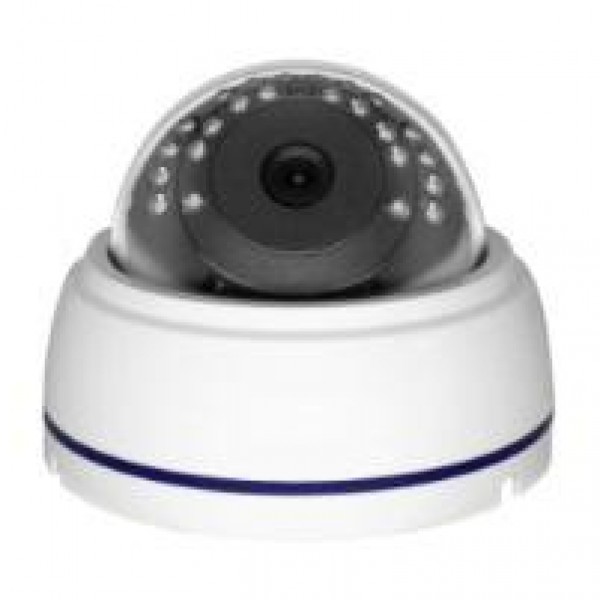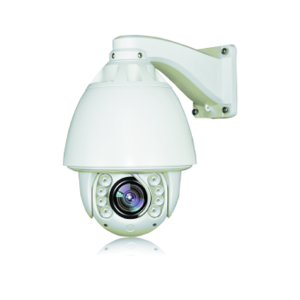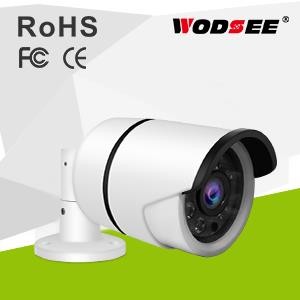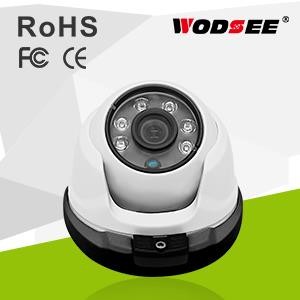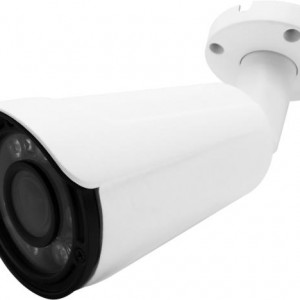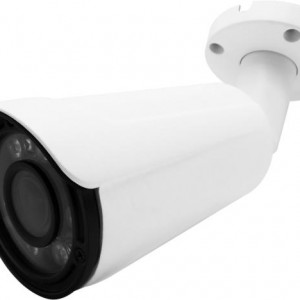Cctv Camera Full Setup Price
Product Details
Cctv camera full setup price
Network camera Features :
Plastic Housing
IR LED: ¢5X24pcs, 20m
Lens: 3.6mm fixed lens
Compatible with Hikvision Private Protocol
Smart Low Illumination; Smart ROI(4 ROI region)
Free P2P; ONVIF2.4; BLC; 3D-DNR; DEFOG; DWDR
Support auto IR-CUT filter removal function/ICR
Support: Milestone, NUUO, AXXON, igifort,avigilon
Scenarios:
Apply to roads, warehouses, underground parking and other place which required definition picture quality.
Specification:
| Model | WIP130-E20 | WIP20A-E20 | WIP20B-E20 | WIP20C-E20 | WIP400-E20 | WIP20S-E20 | |
| Image Sensor | Hi3518EV200 | Hi3518EV200 | Hi3518EV200 | Hi3516CV300 | Hi3516D | Hi3516CV300 | |
| Main processor | AR0130C | SC2135 | IMX323 | SONY323 | OV4689 | SONY290 | |
| Resolution | 1.3mp | 2.0mp | 2.0mp | 2.0mp | 4.0mp | 2.0mp | |
| Day/Night | ICR | ||||||
| Min.Illumination | Low LUX: 1.0LUX(Color) 0.1LUX (B&W) | Low LUX: 1.0LUX(Color) /0.1LUX (B&W) | Low LUX: 0.1LUX(Color) /0.01LUX (B&W) | Low LUX: 0.1LUX(Color) /0.01LUX (B&W) | Low LUX: 0.6LUX(Color) /0.08LUX (B&W) | Low LUX: 0.1LUX(Color) /0.01LUX (B&W) | |
| Lens | 3.6MM | 3.6MM | 3.6MM | 3.6MM | 3.6MM | 3.6MM | |
| IR LED | ¢5X24pcs | ¢5X24pcs | ¢5X24pcs | ¢5X24pcs | ¢5X24pcs | ¢5X24pcs | |
| IR Distance | 20M | 20M | 20M | 20M | 20M | 20M | |
| White Balance | Manual/Automatic | ||||||
| OSD | YES | ||||||
| Electronic Shutter | 1/2000 ~ 1/1000 | ||||||
| VIDEO | |||||||
| Compression | H.264 | H.265/H.264 | |||||
| Max Image Resolution | 1280*960 | 1920*1080 | 1920*1080 | 1920*1080 | 4.0MP(2560×1440) | 1920*1080 | |
| Frame Rate | 12–25FPS ( Adjustable) | 12–25FPS ( Adjustable) | 9–16FPS ( Adjustable) | 7–30FPS ( Adjustable) | 4MP @20 FPS, 2MP @30FPS, 1~30 FPS adjustable | 7–30FPS ( Adjustable) | |
| Bit Rate | 100Kpbs~6Mpbs(Adjustable) | 200Kpbs~5Mpbs(Adjustable) | 200Kpbs~5Mpbs(Adjustable) | 200Kpbs~8000kpbs(Adjustable) | |||
| AUDIO(Optiona) | |||||||
| NETWORK | |||||||
| Protocol | TCP/IP, HTTP, DHCP, DNS, DDNS, UDP,RTSP, PPPoE, SMTP, NTP, UPnP, FTP,etc | ||||||
| Compliance | ONVIF 2.4 | ||||||
| PC Client & Browser | UC2, IE,seetong | ||||||
| Mobile Phone | iPhone,iPad,Android Mobile | ||||||
| INTERFACE | |||||||
| Video Output | RJ45 | ||||||
| LAN | 1 RJ45 10/100 ethernet port | ||||||
| GENERAL | |||||||
| Working Temperature | -10 C ~ + 50 C | ||||||
| Working Humidity | 0% ~ 90% | ||||||
| Power Supply | DC12V ,1A | ||||||
| Dimension | 112×87(H) | ||||||
| Weight | 0.5kg/pcs | ||||||
FAQ:
1.How to install Network video surveillance system front-end equipment?
Network video surveillance system system front-end equipment installation needs to be specific for different equipment, in the installation before carefully read the product manual and installation requirements. The standard steps for installing the terminal device are as follows:
1)Unpacking confirm the completeness of the equipment listed in the product description.
2)Check the power supply voltage to prevent the equipment does not match the equipment damage.
3)to confirm whether the equipment working environment in line with the product manual on the equipment operating temperature, power and other environmental
begging.
4)control equipment manual power test, to confirm a variety of working status indicator to normal operation
2.Can different manufacturers video server connect to different manufacturers network video surveillance system platform?
At present, the manufacturers of video server equipment can only access to the interface has been docked through debugging, because the terminal interface has not completely industry standards, so temporarily can not fully realize the terminal manufacturers and any platform docking.
3.What are the reasons for choosing a high-definition IP camera?
Reason one: The progressive scan of the end of the analog camera is not clear
Reason two: support PoE power supply, effective saving power supply costs
Reason three: megapixel resolution is more clear than analog video
Reason four: intelligent analysis can be integrated into the front-end to reduce the performance requirements of the back-end equipment
Reason five: through the network control PTZ
Reason six: two-way audio exchange through the network
Reason seven: through the network control alarm input and output
Reason eight: digital video encryption can be encrypted more secure than analog video
Reason nine: digital video transmission through the IP network more flexible distance farther and more economical and practical
Reason 10: Digital to avoid multiple analog-digital conversion to reduce image quality
All-digital optional open standard server hardware with lower total cost of ownership advantage.
4.What is the direction of monitoring system development?
The monitoring system will develop to the network, in fact, there are more and more monitoring system to implement the network transmission, some industry insiders believe that the possibility of wireless is relatively small, because any signal can interfere with the wireless monitoring equipment to receive the results, if To strengthen the signal is necessary to consider whether and mobile phones, wireless walkie-talkie to apply for a separate frequency to communicate. The question is the operator who does it? How is the system expanded after the band? These problems will hinder the development of wireless.
Another part of the industry believe that wireless should dominate the future of the network, monitoring will be to the wireless development. Now a lot of internal LAN to the wireless, the network will be a combination of wireless and wired development, the future of monitoring based on the network should also be a combination of wireless and wired development.
1).Web camera universal network camera to provide users with a very rich feature, it integrates a network server, image compression and operating system, anywhere on the network, and even anywhere in the world connected to the Internet can be seen through the standard web browser Images, companies can not use the traditional camera needs coaxial cable to re-network, thus saving a lot of money. For more monitoring systems, professional security software is installed to manage the video signals sent back from the camera. Relative to the wireless camera, its transmission in the performance and distance have certain requirements, more difficult to base on the market.
2).The advantages of the network
The growth of IT and traditional security technologies has made it possible for network technology to be used in monitoring systems, providing more and better security management options.
Network video technology that allows people to remotely monitor Internet coverage anywhere. Network cameras and video servers can be connected directly to the network. The video signal is digitally processed in the camera and transferred to the PC server via a computer network for storage. This is very useful, because the computer network can generally be used, LAN and Internet applications also makes the video signal can be remotely managed and stored. Viewing the monitor image from the web substantially reduces the cost of being traveled to and from the site being monitored. In addition, the image is safe and measurable for storage at a remote site for convenience.
Network video technology also allows users to retain their analog devices and enjoy the full benefits of digital systems. Web recording can control the existing computer architecture, network and monitor, the installation cost is cheaper. In addition, the maintenance fee is reduced, the number of movable parts is reduced, greatly reducing the need for equipment replacement. So its ownership (TOC) is low.
It is precisely because of the maturity of the network technology and monitoring system development needs of their own, making the monitoring system to the network development direction. Compared to the wireless network that is not yet widely used, its advantage is self-evident.
Company news:
Industrial And Surveillance Cameras: Same Or Different?
Idustrial cameras are generally small and compact, capable of capturing high-resolution images. However, they are also highly specialized and an important component of machine vision systems and automated production.
A market research report from MarketsandMarkets reported that the overall machine vision market is expected to grow from US$8.1 billion in 2015 to $12.5 billion by 2020, at a CAGR of 9.1 percent during the forecast period. The machine vision camera market alone reached $1.3 billion in 2015 and is expected to grow at a CAGR of 8.3 percent during the period 2016 to 2021, according to a report by IndustryArc.
So what is it that makes an industrial camera better for machine vision applications, and why can’t video surveillance cameras be used in the same way? We spoke to Eva Tischendorf, Team Leader of Communications at Basler to find out. It appears that the differences between industrial cameras used in machine vision systems and video surveillance cameras used for security might not be immediately obvious; however, upon closer inspection the distinctions are clear.
Industrial Cameras vs. Surveillance Cameras
Although some manufacturers produce both industrial cameras for machine vision systems and video surveillance cameras, they are not interchangeable.
“Industrial cameras send the images as uncompressed (‘raw’) data directly to the PC. The PC is then responsible for processing the relatively large volume of data,” Tischendorf explained. “The big benefit of this method is that no image information is lost. This is crucial for a variety of industrial applications, in the medical and life sciences, or in traffic and transportations.”
On the other hand, IP cameras, which are typically used in surveillance applications or in combination with industrial cameras, record videos (e.g., MPEG-4, MJPEG or H.264) and are placed with a robust housing to be resistant to jolts and harsh weather, suitable for both indoor and outdoor applications. Additionally, IP cameras have been engineered to deliver excellent image quality even under extremely poor lighting and weather conditions. “Network cameras acquire the images and compress them,” she said. “This reduces the volume of data to such a degree that it can be stored in the camera. By connecting to a network, a theoretically unlimited number of users can also access the camera.”
Another major difference between these two types of cameras is who controls and uses them. Video surveillance cameras are typically managed and controlled by security professionals. In contrast, since attention to detail is a vital role of industrial cameras, machines are tasked with these jobs.
WODSEE is one of the best WIP400-E20 IP Surveillance Camera IP Camera App support Starvis H.265/H.264 IP Camera manufacturers and suppliers and we have one of the famous brands. You can buy or wholesale high quality and newest products with CE certification from our factory.
Hot Tags: best brands buy cctv camera full setup price manufacturers CE certification factory high-quality newest suppliers wholesale




